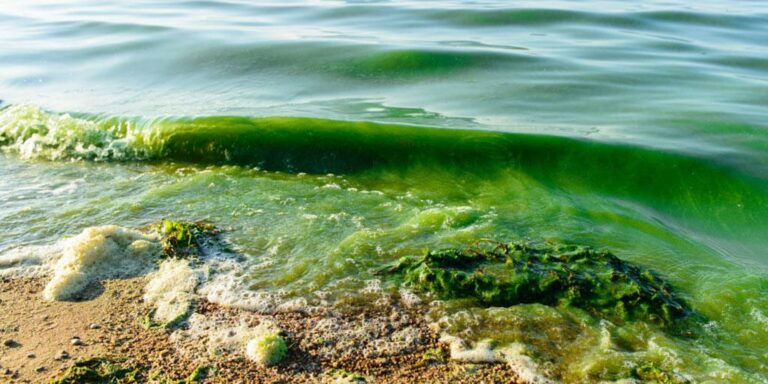A massive algal bloom currently unfolding along South Australia’s coastline has sparked concern among scientists, fishermen, and local communities. This event, characterized by rapid growth of microscopic algae, is not only disrupting marine ecosystems but also threatening commercial fisheries and public health. As the bloom expands, experts warn that the environmental and economic repercussions could extend far beyond South Australia’s borders-highlighting why the rest of Australia should be paying close attention. This article explores the causes behind the bloom, its current impact, and the potential nationwide implications.
SA’s Algal Bloom: Environmental Impact and Underlying Causes
The algal bloom gripping South Australia has emerged as a stark reminder of the delicate balance within marine ecosystems. The rapid proliferation of toxic algae poses significant threats to biodiversity, fisheries, and local economies dependent on coastal resources. Marine wildlife, including fish, seabirds, and marine mammals, are particularly vulnerable as harmful algae can deplete oxygen levels and release toxins, causing mass die-offs and disrupting food chains. Moreover, the bloom impacts human health, with contaminated seafood and tainted water supplies increasing the risk of poisoning and respiratory issues for communities. The environmental consequences ripple beyond SA, affecting broader ecological stability along Australia’s southern coastline.
Scientists attribute the bloom’s severity to a convergence of natural and human-driven factors, underlining urgent environmental concerns. Key contributors include:
- Warmer sea temperatures due to climate change that foster algae growth
- Excess nutrients from agricultural runoff fueling blooms
- Changes in ocean currents that concentrate algal populations
| Underlying Cause | Impact on Bloom Formation |
|---|---|
| Rising Sea Temperatures | Accelerates algae reproduction rates |
| Fertiliser Runoff | Increases nutrient availability |
| Ocean Currents | Clusters algae in specific coastal areas |
Understanding these factors is critical for future policy development, as Australia faces a growing risk of similar events nationwide. Mitigation strategies, such as improved water management and climate change action, are essential to protecting both ecosystems and communities from recurring environmental crises.
Health Risks and Economic Consequences for Coastal Communities
The recent algal bloom in South Australia has triggered a serious health crisis, primarily affecting residents and visitors in coastal communities. Exposure to the toxins produced by the bloom can lead to severe respiratory issues, skin irritations, and in extreme cases, neurological symptoms. Vulnerable groups such as children, the elderly, and individuals with pre-existing respiratory conditions face increased risks. Local healthcare facilities are seeing a surge in cases, placing additional strain on medical resources already stretched thin by other seasonal health concerns.
Beyond health, the economic repercussions are rapidly unfolding as fishing bans and beach closures disrupt livelihoods. Key industries like commercial fishing and tourism – vital pillars of many coastal economies – are suffering significant losses. Some immediate impacts include:
- Fishing restrictions: Closure of numerous fishing zones has halted the supply chain for several seafood businesses.
- Tourism decline: Decreased visitor numbers have led to vacant accommodations and reduced business for local retailers and restaurants.
- Job insecurity: Workers dependent on marine industries face uncertain employment prospects in the coming months.
The following table outlines a snapshot of economic effects seen in affected communities:
| Community | Fishing Revenue Loss (%) | Tourism Booking Decline (%) | Unemployment Spike (%) |
|---|---|---|---|
| Port Lincoln | 45 | 30 | 10 |
| Whyalla | 38 | 25 | 8 |
| Ceduna | 50 | 40 | 12 |
What Other Regions Can Learn and How Australia Should Respond
South Australia’s algal bloom offers a critical blueprint for other regions vulnerable to similar environmental threats. The scale and impact of this bloom reveal key lessons about the consequences of nutrient runoff, rising water temperatures, and changing rainfall patterns, which are not isolated to SA alone. Other states should consider these factors seriously, especially as climate variability intensifies. Proactive water management strategies, enhanced monitoring systems, and community engagement are essential measures that could mitigate similar ecological crises elsewhere.
In response, Australia must prioritize a multi-pronged approach that blends science, policy, and local collaboration. Recommended actions include:
- Investing in early warning systems to detect algal growth before it reaches critical levels.
- Implementing stricter agricultural regulations to reduce fertilizer runoff and improve water quality.
- Enhancing cross-jurisdictional data sharing for coordinated responses across state borders.
To illustrate the urgency and scale of the issue, the table below outlines key differences in bloom severity and response readiness among Australian regions:
| Region | Bloom Frequency | Water Quality Monitoring | Preparedness Level | ||||||||||||||||||
|---|---|---|---|---|---|---|---|---|---|---|---|---|---|---|---|---|---|---|---|---|---|
| South Australia | High | Advanced | Medium | ||||||||||||||||||
| Queensland | Moderate |
| Region | Bloom Frequency | Water Quality Monitoring | Preparedness Level |
|---|---|---|---|
| South Australia | High | Advanced | Medium |
| Queensland | Moderate | Intermediate | Medium |
| New South Wales | Low | Basic | Low |
| Victoria | Low | Basic | Concluding Remarks
As South Australia continues to grapple with the impacts of its algal bloom, experts warn that the effects could extend far beyond the state’s coastline. From disrupting marine ecosystems to threatening fisheries and local economies, the bloom serves as a stark reminder of the broader environmental challenges facing Australia’s waterways. Understanding the causes and consequences of this phenomenon is crucial, not only for South Australians but for the entire nation, as climate change and human activity increase the likelihood of such events elsewhere. Staying informed and proactive will be key to mitigating future risks and protecting Australia’s diverse aquatic environments. |




